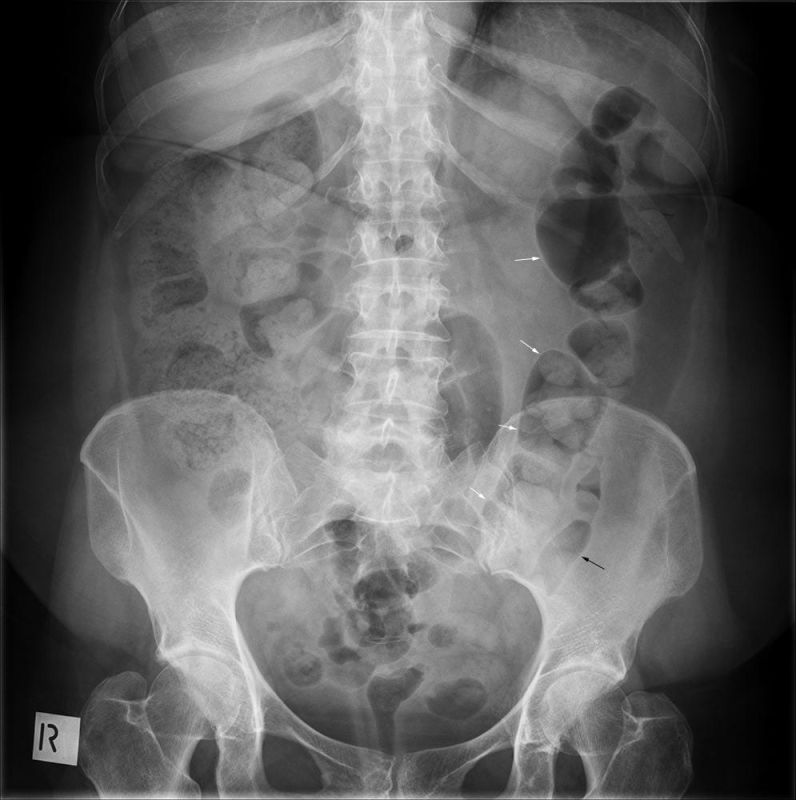Abdominal Plain Film Anatomy
Jump to navigation
Jump to search
Introduction
The Large Bowel
The identification of the anatomy demonstrated on an abdominal plain is variable. It is almost impossible to guarantee the demonstration of abdominal viscera on anay one abdominal plain film. Structures such as the psoas muscle and spleen for example will be demonstrated clearly on some abdominal plain films and completely obscured on others. The reasons can be projectional, position, structural, pathological and chance. This page considers the normal appearances and normal variations in appearances of the normal features demonstrated on abdominal plain film.
The Large Bowel
